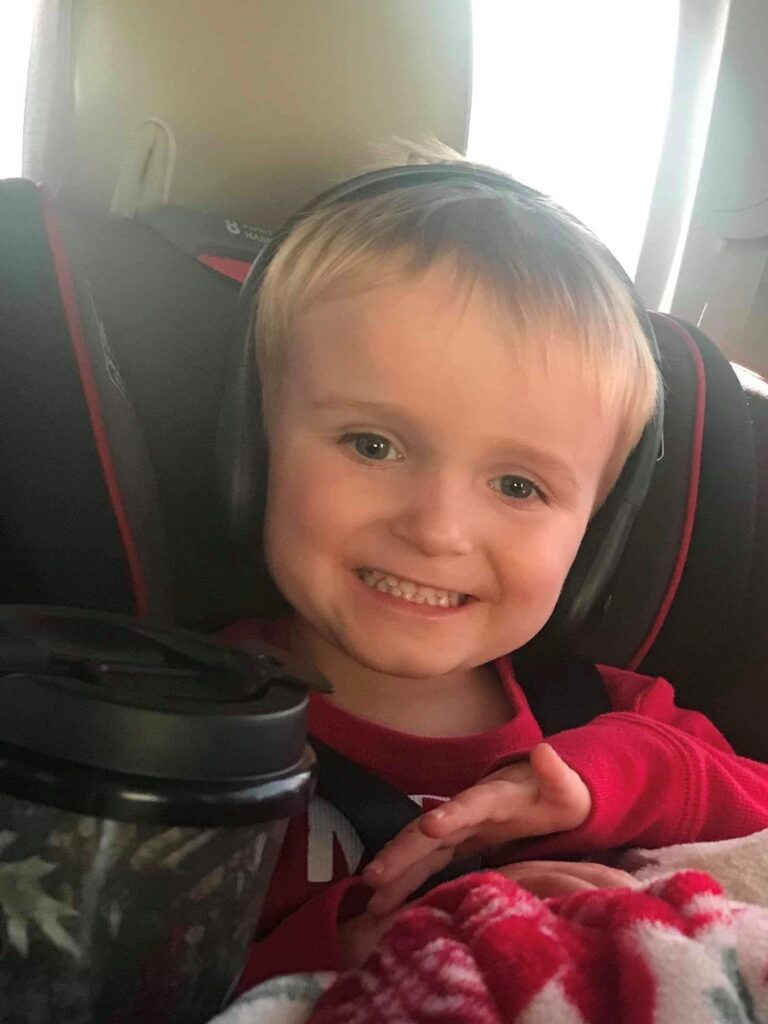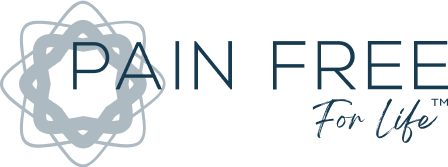
In this week’s case study, we will be looking at a particularly difficult condition, hydrocephalus, and how one child found success in treating his vision problems through microcurrent therapy.
A Welcome Addition

The day your child is born is the happiest day of your life. Many prospective parents spend years looking forward to starting a family and are elated when they find out they are expecting a new member to join the family. In the months leading up to the birth of a child, many preparations are made: painting the nursery, attending doctors’ appointments, and celebrating with friends and family. The one wish expectant parents have is for a healthy and happy child, and one of the most difficult situations to process is finding out your child may need extensive treatment and care for a serious health problem.
Ryker’s Hydrocephalus Diagnosis
When Amanda welcomed her beautiful baby boy, Ryker, into the world she was told he was born with hydrocephalus, or fluid on the brain.
Hydrocephalus is a serious neurological condition in which cerebrospinal fluid accumulates in the cavities of the brain. The excess fluid increases pressure on the brain, causing damage to tissues and a range of impairments in brain function. This condition is most common in infants and those who are over 60 years of age. Symptoms vary depending on age.
According to Mayo Clinic, hydrocephalus symptoms in infants include:
- Sleepiness
- Irritability
- Poor feeding
- Seizures
- Eyes fixed downward
- Deficits in muscle tone and strength
In toddlers, hydrocephalus symptoms may include:
- Headache
- Blurred or double vision
- Eyes fixed downward
- Abnormal enlargement of a toddler’s head
- Sleepiness or lethargy
- Nausea or vomiting
- Unstable balance
- Poor coordination
- Change in personality
- A decline in school performance
- Delays or problems with previously acquired skills, such as walking or talking
This unsettling diagnosis didn’t negate any of the joy Amanda experienced in the birth of her son, but she knew she would need to be on top of his treatment so he could live a happy and healthy life. Regular doctors’ appointments became a simple fact of life for Ryker.
Ryker’s team of talented doctors initially decided on minor eye surgery to help with movement and function of his eyes. This didn’t completely solve his vision issues, but Amanda was hopeful she would see further progress as time went on.
Mounting Challenges

As Ryker grew from an infant into a toddler Amanda noticed some signs that he was having difficulty in his day-to-day functions. Ryker was still having trouble with his vision and frequently stumbled and fell. For such a sweet little guy, Ryker seemed to lack confidence in social situations. For example, when he was in a group of children, he would choose to play alone quietly with toy cars and trucks.
When a young child can keep himself occupied, this can be an amazing feat! But Amanda knew it was because he was having trouble with his vision. She very much wanted to get Ryker back on track to making friends and laughing with the other children. At their next eye doctor’s appointment, Amanda expressed her concerns, and they discussed the potential of an invasive surgery down the line to correct the problem.
A Natural Eye Surgery Alternative
Accepting the potential for future surgeries, Amanda asked her doctor if he had any other ideas on how to work on Ryker’s vision issues. He surprised her with a novel idea, suggesting that Ryker visit Hache Protocol-trained microcurrent practitioner Diana Evans for treatment of his right eye. The doctor informed Amanda that microcurrent therapy had been successful in some of his patients with this condition, so Amanda figured “what do we have to lose?” In an attempt to shield Ryker from invasive surgery, Amanda reached out to Diana to start a treatment protocol right away.
Diana’s Treatment Plan

We talked with Diana about Ryker’s microcurrent eye treatment to see how she approached this difficult situation and she informed us of the following course of action:
Diana stated her initial goal for Ryker’s treatment was to make him feel comfortable and safe. With young children, it is important to develop trust, and Diana did this by creating a calm, comfortable, and predictable microcurrent vision treatment routine with Ryker.
Utilizing the Avazzia Pro Sport III, Diana started with treating Ryker’s right eye. Diana applied microcurrent in the area of Ryker’s right temple then all around his orbital socket, then focusing on his left eye using the Acute function letting it cycle 10 times. Diana noted the Acute function seemed to strengthen the muscles, as it “pulls and releases” on the muscles.
Building on the previous treatment, Diana started incorporating Microcurrent Goggles to help strengthen the left eye even more. Amanda would take Ryker to see Diana two times a week, establishing a routine that Ryker was able to predict. Throughout the treatment, Diana would vary the frequencies to determine which ones would provide the best results. She cycled through the following algorithms: Acute, Vaso, eye smooth, Blue Relax and Stimulate.
Diana also incorporated the Brush Electrode attachment. At first, Ryker didn’t like his head being combed, as it was extra sensitive. Diana came up with a great solution to this issue by making a game out of it! The game was called “Airplane”. The airplane, or comb, would start at the runway, or forehead, then she would zoom it over his head. Ryker started to laugh and enjoy airplane time and began to even look forward to it! Diana’s smart approach to this treatment made Ryker feel relaxed and happy, and allowed him to receive the optimum benefits of microcurrent eye therapy.
Being an active toddler, Ryker often scooted around as Diana tried to treat him, so keeping him calm was important. If Ryker fell asleep in the car on the way to the appointment, Amanda would gently carry him in, and Diana would treat him as he slept. The gentle currents went unnoticed by Ryker, and he would sometimes sleep through the entire appointment. On days he was high energy, which is very common for toddlers, Diana would stimulate the vagus nerve on one side for a brief period and he would noticeably calm down.
Progress Achieved!

It was now time for Amanda to take Ryker to see his neurosurgeon. She was ecstatic to hear the fluids had stabilized and even subsided in Ryker’s brain. With his vision and balance also showing improvement, this was the assurance Amanda needed to know that microcurrent vision therapy was helping her son.
This gentle, non-invasive treatment was the solution Amanda and her family needed to aid in Ryker’s healing, and they couldn’t be happier. Ryker’s doctor suggested they continue with this treatment for six months before any further plans are made for his treatment.
A Message from Amanda
Amanda wanted to share in her own words her experience with microcurrent eye therapy and what it meant for her and her family:
“I have no doubt the treatments Diana did absolutely changed Ryker into a completely different little boy. He plays with other kids now and doesn’t stumble and fall all the time. I looked out the window a few days ago and saw him climbing his jungle gym with complete confidence-not afraid of falling as he was before the treatments. Ryker will probably still have to have one more eye surgery for one muscle but much less invasive than first diagnosed! Very thankful we found out about the Micro Current therapy for this sweet boy!”
It Takes a Village

It can be so scary when you find out your child will need focused medical care, but Amanda was proactive, positive, and had the vision to seek out alternative treatments for her son, Ryker. She stayed strong for her child, creating a routine and environment of predictability surrounding his treatment with Diana. Diana was a rock star by thinking outside the box on how to approach Ryker’s treatment plan, creating games that put him at ease when it was time for his therapy. Ryker’s doctors went above and beyond for this young boy, presenting alternative options for Amanda when an invasive surgery seemed to be the only option.
As you can see, Ryker truly has a village of people surrounding him, supporting him, loving him, and giving him the best chance for continued success in treating his hydrocephalus. This healing village is the best-case scenario when a child is suffering from a serious medical problem, and we are so proud to play a role in this concentrated effort to make sure Ryker grows up to be a strong, happy, healthy, and confident kid. His healing village has a vision for his success, and his future is bright.





